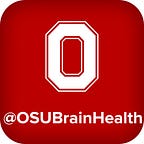Recovering From A Stroke? This Video Game May Help
Recovery Rapids is straightforward, as far as videogames go. The player uses a motion detector to paddle a kayak through a roaring river, frequently swatting away insects, collecting supplies, and navigating around rapids and fallen trees. There’s no danger of a “game over” screen, since a player will never run out of lives or fail to reach a checkpoint in time. The purpose of the game has little to do with achieving any gameplay objective, since its impact is supposed to be felt in the real world, by people recovering from stroke.
Developed over the course of three years through a major multidisciplinary project involving computer scientists, brain researchers, and physical therapy experts at The Ohio State University, Recovery Rapids might be just as effective as one-on-one high-repetition physical therapy. “We were able to replace a lot of the training that would be done one on one with a therapist with a video game,” explained Lynne Gauthier, assistant professor of Physical Medicine and Rehabilitation at Ohio State University. The patients play the game at home using a Microsoft Kinect system, and then occasionally meet with a physical therapist. The game is meant to help post-stroke patients develop strength and movement in the half of the body most impacted by the stroke and is part of a therapy regimen that also includes a smartwatch biofeedback app, also developed by Dr. Gauthier’s lab and applied to promote use of the patient’s weaker arm for everyday activities. Not utilized in conventional therapy, such an emphasis on carry-over of motor training to daily activities enhances brain plasticity and improves outcomes.
The system replaces dozens of hours that used to be spent with an actual medical professional and costs patients less than $2,000, including a gaming PC and Microsoft Kinect — less than a third of the price of quality post-stroke physical therapy that the game is attempting to replace. By allowing the majority of therapy to be carried out at home, it also reduces many barriers to accessing quality care.
Recovery Rapids appears to be very simple in terms of objective and gameplay, but it both contains and processes a staggering amount of health-related information. The game contains an extensive “gesture library” that allows the game to accurately assess a user’s progress. As the patient regains strength, the game gets harder and requires more effort for a patient to perform movements that the game will actually detect.
“There are some movements that you want to promote, and there are certain other types of movements you want to discourage,” Gauthier said of post-stroke physical therapy. “We’ve designed the game so that the types of movements you want to be encouraging through rehab are done more frequently in the gaming environment. And doing those movements drives the gameplay.”
This piece is part of a special brain health initiative curated by Dr. Ali Rezai of The Ohio State Wexner Medical Center Ross Center for Brain Health and Performance. For more, visit The Huffington Post’s Brain Health page.
Follow OSUBrain Health on Twitter!
Follow Games That Move You on Twitter!
Originally published at www.huffingtonpost.com on October 17, 2016.
